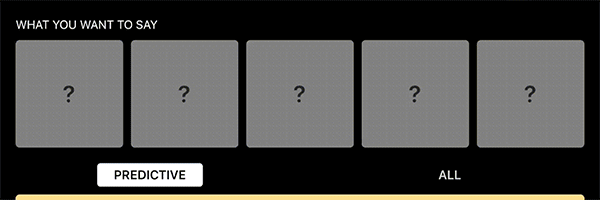
speak your mind AAC Add-on
Augmentation and Alternative Communication (AAC) Apps are used by both adults and children with developmental and/or speech disabilities. It is a great tool for those who are non-verbal. However, it has its limitations as well. From our observations of children using various AAC Apps (e.g TouchChat, Proloquo2go), the most common challenge is how it could take a long time to construct a sentence. We thought that given how prevalent text prediction is, it should also be implemented in AAC apps.
This AAC app add-on prototype aims to play a supportive role in communication. It is based on everyday vocabulary, informed by machine learning and word prediction aimed at speedier and more intuitive communication to be used whilst on-the-go. It is not intended to be a holistic AAC system for language learning.
The first page of the app displays the [simple] interface which the child would be using to select words to form their sentences. The 3 words appearing on the first page would be the most commonly used words by this child. After selecting each word, the app will try to predict the next word based on the frquency of words used. If the word needed is not part of the suggestion, the [all] interface has all the words included within this app. We decided to limit the total number of words to about 100 words in order to effectively test the algorithm which selects the commonly used words.
As text prediction with machine learning requires a long time and a substantial amount of data for training, better results are achieved by sustained use of the app.
We wish to thank Mulberry Symbols for the use of their graphic symbols intended for AAC. Copyright 2018/19 Steve Lee - This work is licensed under the Creative Commons Attribution-ShareAlike 2.0 UK: England & Wales License.
This app was developed in collaboration with STUCK Design